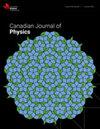Numerical Study of The Effect of Heat-flow Coupling on Interface Instability Based on Front-Tracking
IF 1
4区 物理与天体物理
Q3 PHYSICS, MULTIDISCIPLINARY
引用次数: 0
Abstract
The interfacial instability of two-phase immiscible fluids in inclined tubes at constant temperature boundary conditions is numerically investigated by the Front-Tracking Method (FTM). By analyzing the effects of inclination angle , Marangoni number (Ma) and Rayleigh number (Ra) on the interfacial instability, the interaction law between unstable interface fluctuation and heat transfer is studied. The results show that the larger the inclination angle, the easier the interface is destabilized, and the heat transfer at the interface will also decrease. In the comparison of inclination angles of 0°, 30°, 45° and 60°, the heat transfer is more stable at 45°. The heat flux between fluids decreases with the increase of Ma number, and Ma number has little effect on the interfacial fluctuation. It mainly affects the interfacial morphology by changing the surface tension gradient at the interface, which is mainly reflected in the end of the convolution interface. The larger the Ma number, the more inward the interface develops. Ra number has an obvious inhibitory effect on the interfacial instability. The effect of Ra number on heat flow transfer at the interface shows alternating changes. In the initial stage, the heat transfer between fluids in the inclined tube is greater than that in the horizontal tube, but in the later stage, the heat transfer is less than that in the horizontal tube.基于前跟踪的热流耦合对界面不稳定性影响的数值研究
采用前沿跟踪法对倾斜管内两相非混相流体在恒温边界条件下的界面不稳定性进行了数值研究。通过分析倾角、马兰戈尼数(Ma)和瑞利数(Ra)对界面不稳定性的影响,研究了不稳定界面波动与传热之间的相互作用规律。结果表明,倾角越大,界面越容易失稳,界面处的换热也会减小。在0°、30°、45°和60°的倾角对比中,45°的传热更稳定。流体间热流密度随Ma数的增加而减小,Ma数对界面波动影响不大。它主要通过改变界面处的表面张力梯度来影响界面形态,这主要体现在卷积界面的末端。Ma值越大,界面越向内发展。Ra数对界面不稳定性有明显的抑制作用。Ra数对界面热流传递的影响呈交替变化。在初始阶段,斜管内流体间的换热大于水平管内流体间的换热,但在后期,流体间的换热小于水平管内流体间的换热。
本文章由计算机程序翻译,如有差异,请以英文原文为准。
求助全文
约1分钟内获得全文
求助全文
来源期刊

Canadian Journal of Physics
物理-物理:综合
CiteScore
2.30
自引率
8.30%
发文量
65
审稿时长
1.7 months
期刊介绍:
The Canadian Journal of Physics publishes research articles, rapid communications, and review articles that report significant advances in research in physics, including atomic and molecular physics; condensed matter; elementary particles and fields; nuclear physics; gases, fluid dynamics, and plasmas; electromagnetism and optics; mathematical physics; interdisciplinary, classical, and applied physics; relativity and cosmology; physics education research; statistical mechanics and thermodynamics; quantum physics and quantum computing; gravitation and string theory; biophysics; aeronomy and space physics; and astrophysics.
 求助内容:
求助内容: 应助结果提醒方式:
应助结果提醒方式:


